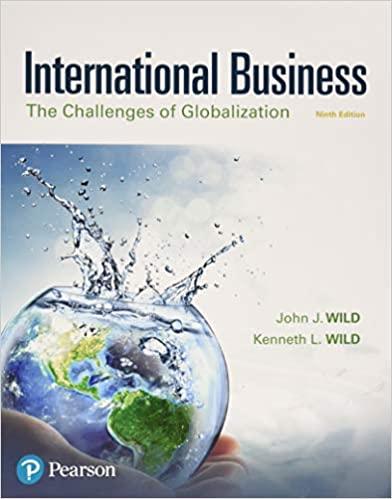Answered step by step
Verified Expert Solution
Question
1 Approved Answer
Please answer the two questions below. THE MORE IMPORTANT instructions on the information needed are attached. PLEASE FOLLOW THEM. Thank you :) 1) Assessthefactors thatcontributetosomeonebeing

Please answer the two questions below. THE MORE IMPORTANT instructions on the information needed are attached. PLEASE FOLLOW THEM. Thank you :)
- 1)Assessthefactorsthatcontributetosomeonebeingriskadverseandhowriskaversionmaybediminishedforinvestors.
- 2)Explain how a given investor chooses an optimal portfolio and the most significant driver that determines if a diversified or single asset will be used.
 Talk about Markowitz's Modern Portfolio Theory (MPT) which is one of the oldest concepts in portfolio theory. The questions ask you to discuss risk aversion and how to build an optimal portfolio. PAY ATTENTION: Your argument should be based on correlation and standard deviations of returns for various markets or assets that you invest in. Correlation is how returns are correlated with each other. For instance, you can make a good assumption that the returns of Chevron will mirror those of Exxon, so these stocks would have a positive correlation. You can also make the assumption that the returns of Exxon may not mirror those of Apple, as such; you have either no correlation or possibly a negative correlation. In constructing a portfolio, you want to include stocks whose returns are not correlated, so if one stock has a negative return, the other stock may have a positive return. But at the end of the day, your total return is positive. Now consider standard deviation, which is a measure of risk that is mathematically determined based on prior results. Stocks that have a higher standard deviation have a higher level of risk. However, when you combine negatively correlated stocks together, with stocks of varying standard deviations, you can reduce your overall portfolio risk, and smooth your returns. For the second question, you are to construct an argument for the average investor to diversify into international markets. Your answer to this question can be like a blank canvas ready for your creation. Investing in foreign markets can favorable. Not all markets or economies move in the same direction and they certainly don't move at the same pace. As such, you can find foreign markets that will outperform domestic markets. The opposite is also true, sometimes foreign markets are in a recession and their markets may be declining in value. For example, China's stock market has declined significantly over the past few months, and others are somewhat volatile as well. One critical issue to consider is how will investing in foreign markets affect the variation and standard deviation of the returns for your portfolio? There are a lot of articles written on that subject, so you should have a good time with this question. Please stay away from Investopedia/Wikipedia, as there are certainly better sources available
Talk about Markowitz's Modern Portfolio Theory (MPT) which is one of the oldest concepts in portfolio theory. The questions ask you to discuss risk aversion and how to build an optimal portfolio. PAY ATTENTION: Your argument should be based on correlation and standard deviations of returns for various markets or assets that you invest in. Correlation is how returns are correlated with each other. For instance, you can make a good assumption that the returns of Chevron will mirror those of Exxon, so these stocks would have a positive correlation. You can also make the assumption that the returns of Exxon may not mirror those of Apple, as such; you have either no correlation or possibly a negative correlation. In constructing a portfolio, you want to include stocks whose returns are not correlated, so if one stock has a negative return, the other stock may have a positive return. But at the end of the day, your total return is positive. Now consider standard deviation, which is a measure of risk that is mathematically determined based on prior results. Stocks that have a higher standard deviation have a higher level of risk. However, when you combine negatively correlated stocks together, with stocks of varying standard deviations, you can reduce your overall portfolio risk, and smooth your returns. For the second question, you are to construct an argument for the average investor to diversify into international markets. Your answer to this question can be like a blank canvas ready for your creation. Investing in foreign markets can favorable. Not all markets or economies move in the same direction and they certainly don't move at the same pace. As such, you can find foreign markets that will outperform domestic markets. The opposite is also true, sometimes foreign markets are in a recession and their markets may be declining in value. For example, China's stock market has declined significantly over the past few months, and others are somewhat volatile as well. One critical issue to consider is how will investing in foreign markets affect the variation and standard deviation of the returns for your portfolio? There are a lot of articles written on that subject, so you should have a good time with this question. Please stay away from Investopedia/Wikipedia, as there are certainly better sources available Step by Step Solution
There are 3 Steps involved in it
Step: 1

Get Instant Access to Expert-Tailored Solutions
See step-by-step solutions with expert insights and AI powered tools for academic success
Step: 2

Step: 3

Ace Your Homework with AI
Get the answers you need in no time with our AI-driven, step-by-step assistance
Get Started


